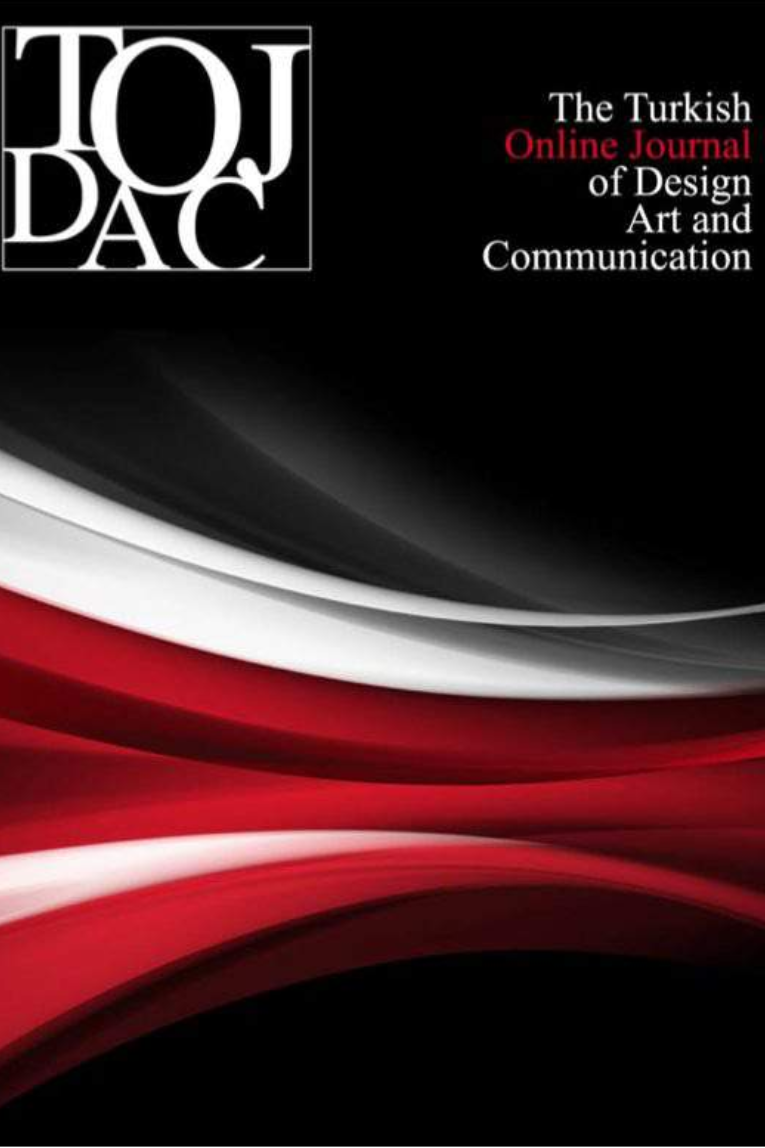ADEM VE HAVVA’NIN MODERN BİR ZAMAN-MEKANDA TEMSİLİ: YARATILIŞ ANLATISININ ADAPTASYONU BAĞLAMINDA EX MACHINA (2015) FİLMİNİN ANALİZİ
İnsanlık, kendi varoluşunun nasıl gerçekleştiğini tarih öncesinden beri sürekli olarak merak etmiş ve bu soruyu sürekli olarak gündemde tutmuş, cevap arayışını sürdürmüştür. Üç semavi dinin de ortak noktalarından biri olan insanlığın yaratılışı ve Adem ve Havva kıssası, sözlü ve yazılı edebiyat geleneği için pek çok kez konu edilegelmiştir. Bu öyküyü farklı şekilde kimi zaman doğrudan kimi zaman ise sembolik olarak ifade eden anlatılara rastlanmaktadır. Bir modern zaman endüstrisi ve aynı zamanda sanat dalı olan sinemada da bu kıssanın anlatıldığı örnekler mevcuttur. Bu çalışmada yaratılış mitini günümüze uyarlayan 2015 yılında Andrew Macdonald ve Allon Reich’ın prodüktörlüğünü yaptıkları, Alex Garland tarafından çekilen Ex Machina (2015) filmi incelenecektir. Teknolojik olarak günümüzden çok ileride bir mekan ve zamanda robotların insansılaşmasını konu alan film bu anlamda mite sanki bir güncelleme getirme çabasındadır. Bu bağlamda filmde yapılan adaptasyon ile orijinal mitte anlatılanlar karşılaştırmalı bir analiz ile tartışılmıştır. Çalışmanın sonunda elde edilen bulgular ile, filmin yaratılış mitini modern bir trajedi olarak yeniden yazdığı sonucuna ulaşılmıştır.
Anahtar Kelimeler:
Yaratılış Anlatısı, Adaptasyon, Sinema, Trajedi, İnsansı Robot.
REPRESENTATION OF ADAM AND EVE IN A MODERN TIME- SPACE: ANALYSIS OF THE MOVIE “EX MACHINA” (2015) IN THE CONTEXT OF ADAPTATION OF THE GENESIS CREATION NARRATIVE
Since prehistoric times, humankind has always wondered how its own existence came to be, and has always kept this question on the agenda and continued its search for an answer. One of the central themes of all three monotheistic religions is the genesis of humanity, and the tale of Adam and Eve has frequently been the topic of oral and written literature. This story is expressed in various ways in narratives, sometimes literally and sometimes figuratively. Examples of this narrative can be found in the film, which is both modern industry and a form of art. In this study, Ex Machina (2015) movie, which is directed by Alex Garland produced by Andrew Macdonald and Allon Reich and adapts the creation myth to the modern day, would be analyzed. The movie attempts to modernize the myth in this way as it concentrates on the humanization of robots in a setting and era that are technologically far advanced beyond s present. In this context, a comparison of the film's version and the story recounted in the original myth is examined. The study's findings led to the conclusion that the movie transformed the genesis myth into a contemporary tragedy.
Keywords:
Genesis Narrative, Adaptation, Cinema, Tragedy, Humanoid Robot.,
___
- Allen, J. T. (1990). Fig Leaves in Hollywood: Female Representation and Consumer Culture. &. C. J. Gaines içinde, Fabrications: Costume and the Female Body (s. 122-133). Routledge.
- Banham, M., & Brandon, J. R. (1995). The Cambridge Guide to the Theatre. Cambridge University Press.
- Batuk, C. (2006). Âdem ve Havva'nın Kitabı: Eski Ahit Apofrikasında Adem ve Havva'nın Hayatı. Hitit Üniversitesi İlahiyat Fakültesi Dergisi, 51-96.
- Berktay, F. (2003). Tarihin Cinsiyeti. Metis.
- Berktay, F. (2006). Yeni Kimlik Arayışı: Eski Cinsel Düalizm: Peyami Safa'nın Romanlarında Toplumsa Cinsiyet. Kadın Araştırmaları Dergisi, 77-90.
- Bonhoeffer, D. (1997). Creation and fall: A theological exposition of Genesis 1-3. Fortress Press.
- Çakır, D. (2021). Ataerkil Kültürün Bir Yansıması Olarak Femme Fatale (Ölümcül Kadın) Kadın Temsili: Gone Girl Filminde ‘Medea’ Miti., (s. 86-95). Yakın Doğu Üniversitesi.
- Derrida, J. (2002). Writing and Differance. Routledge.
- Elsöz, Ü. (2018). Hz.Adem Kıssasına Kelami Açıdan Yeni Bir Bakış. Eskişehir Osmangazi Üniversitesi İlahiyat Fakültesi Dergisi, 135-157.
- Elshtain, J. (1981). Against Androgyny. Telos, 5-21.
- Felski, R. (2008). Rethinking Tragedy. JHU Press.
- Güz, H., & Şahin, G. (2018). Sosyal Medya İletişiminin Yeni Aracı Olarak Bedenler Ve Benliklerin Dramaturjik Bir Analizi. Uluslararası Sosyal Bilimler Dergisi, 235-254.
- Ginzberg, E. (1937). The Social Sciences Today. Political Science Quarterly, 583-587.
- Grossman, J. (2009). Rethinking the femme fatale in film noir: Ready for her close-up. Palgrave Macmillan.
- Higgins, J. M. (1976). The Myth of Eve: The Temptress. Journal of the American Academy of Religion, 639-647.
- Kılıç, A. (2010). "Kutsal Meryem" Mi "Lanetli Havva" Mı?: Mitoloji, Din ve Bilimde Kadın İmgesi Üzerinden Bir "Antichrist" Değerlendirmesi. IDEA, 1-22.
- Johnson, L. T. (1991). The gospel of Luke (No. 3). Liturgical Press.
- Klein, E. (1966). A Comprehensive Etymological Dictionary Of The English Language : Dealing with the origin of words and their sense development thus illustrating the history of civilization and culture. Elsevier.
- Kline, M. (2022). Before Chapter And Verse: Reading the Woven Torah. Moshe Kline, 9-13.
- Öztürk, M. (2004). Adem, Cennet ve Düşüş. Milel ve Nihal, 151-186.
- Pfister, M. (1991). The Theory and Analysis of Drama. Cambridge University Press.
- Sanders, T. (2009). Approaching Eden: Adam and Eve in popular culture. Rowman & Littlefield.
- Sanders, T. (2016). The Bible in Motion: A Handbook of the Bible and Its Reception in Film. B. R. B. içinde, Adam and Eve in Film (s. 17-34). De Gruyter.
- Schearing, L., & Ziegler, V. (2013). Enticed by Eden: How Western Culture Uses, Confuses, (and sometimes abuses) Adam and Eve. Baylor University Press.
- The Holy Qurʼān: Arabic Text and English Translation. Islam International, 2004.
- Troll, C. W. (1999). Tarihi Bir Olay Olarak Hristiyanlık. Cumhuriyet Üniversitesi İlahiyat Fakültesi Dergisi, 257-272.
- Unal, A. (2017). Yahudi Geleneğinde Kadının Yaratılışı ve Lilit Efsanesi. Çukurova Üniversitesi İlahiyat Fakültesi Dergisi, 103-115.
- Van Dijk, T. A. (2015). Critical discourse analysis. In Tannen, D., Hamilton, E. H., Schiffrin D. (Eds.), The Handbook of Discourse Analysis (pp: 466-485). Wiley.
- Williams, R. (2013). Modern Tragedy. Random Hous.
- Başlangıç: 2011
- Yayıncı: Deniz YENGİN
Sayıdaki Diğer Makaleler
ESTONYA’NIN MÜZİĞİ: HALK MÜZİĞİ BAĞLAMINDA HEINO ELLER KEMAN KONÇERTOSU
ŞİDDETSİZ ÖZGÜRLÜK YÜRÜYÜŞÜNÜN FİLOZOFU: MARTIN LUTHER KING
H.özlem YURTGÜN, Güzin DEMİRKAN TÜREL
İÇ MİMARLIK VE ÇEVRE TASARIMI EĞİTİMİNDE SUNUM TEKNİKLERİNE YÖNELİK 2.5 BOYUTLU DENEYİMLER
Ece ESEN, Gülçin Cankız ELİBOL
Emir Orhan KILIÇ, Cüneyt BOZKURT
MODERNİZM AKIMININ İKONİK MOBİLYA TASARIMI ÜZERİNDEKİ ETKİSİ
SANATI METALAŞTIRMAK: SANAT PAZARI VE SANAT PAZARLAMASI
YAPAY ZEKÂ YOLUYLA OLUŞTURULAN SAHTE HABERLERİN MEDYA GÜNDEMİNİ BELİRLEMESİ
